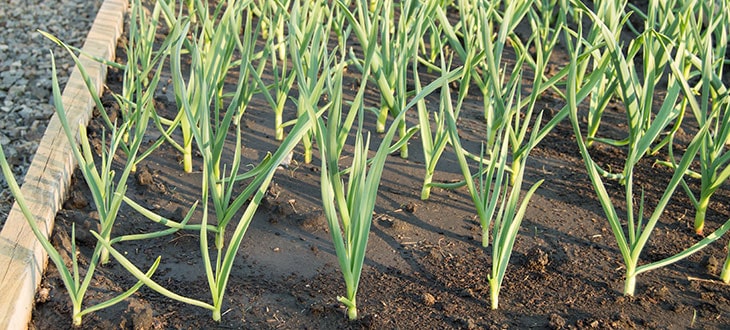Watering Garlic Tips: How Often And How Much
First time growing garlic and want to find out how much and how often you should be watering this plant? Learn more in this article.
Disclosure: This page contains affiliate links. This means that the owner of this website might be compensated for any qualifying purchases made via these links.
How much and how often should I water garlic? This is a common concern among people raising garlic for the first time.
Although many expect a simple answer, when it comes to watering plants, it is never easy to provide a straightforward response because it is just something that depends on many factors. Thus, in this article, we will analyze several situations and try to give you a more accurate answer.
Garlic is a cold-hardy crop that will overwinter and can withstand temperatures as low as -30°F (35°C). (source)
The best time for planting garlic may vary from one region to another. However, in most climates, the preferred month to establish this crop is October. Yet, in other parts, it can be planted even in late August, September, or even in the spring if it is to be consumed green.
Generally, should be planted about 2 to 3 weeks before the ground freezes to give the cloves enough time to develop roots before going dormant.
Contents
Garlic Water Requirements
Garlic is not a plant that requires a large amount of water for healthy growth. However, the optimal amount and frequency of watering garlic depends on several factors, such as the time of year, soil type, climatic conditions, etc.
After planting (in the fall)
Autumn is usually a rainy season, and garlic may not need watering at all during the first period. However, if you think the soil is very dry, you can water the garlic lightly immediately after planting.
If it does not rain for more than about 10 consecutive days before frost and the soil becomes dry, then you will need to water it.
Another way to maintain more humidity in the soil and protect the cloves from the winter cold is to cover your garlic with a consistent layer of hay, pine straw, or leaves mulch.
In winter
No watering is necessary for garlic during the winter months as the plants are in a dormant state when the ground is frozen.
Also, no fertilization is necessary during this time.
In spring
You will often have to start watering the garlic only after the ground thaws in the spring and the weather starts to warm up. During this period, when the heads are forming, you should water the garlic about once every 3 to 5 days, depending on how dry the soil gets.
Make sure you irrigate enough that the water reaches the roots of the plants.
To determine how wet the soil is under the surface, we recommend using a moisture meter (affiliate link).
Based on soil types
What also influences the frequency of watering garlic and the quantity of water needed is the type of soil.
Some soils retain water better than others, so the plants that grow in them will have moisture for a longer period than those in soils that dry very quickly, like sandy soils.
Although garlic can be cultivated in a wide range of soil types, the best soils for it are well-drained and have a good amount of organic matter.
You can enhance the quality of your soil by adding compost. Read our composting guide for more information about starting producing compost at home from food scraps and other organic items.
Another way to deal with poor-quality soils is to grow garlic in raised beds instead of planting it directly in your garden. This way, you have full control over the soil type you use.
Before harvesting
The optimal period for harvesting garlic can vary from one climate to another. Usually, you can tell that your garlic is almost ready for harvesting when the leaves at the base of the plant start drying.
About 2-4 weeks before the established harvesting date, you need to stop watering the plants.
Of course, you can’t control the weather, so it may be raining during this time. If this happens, wait for the soil to dry before digging out the heads.
Can you overwater garlic?
Yes, just like with many other plants, you can overwater garlic.
If the soil retains too much moisture, cloves may begin to rot or develop various diseases. Some of the most common garlic diseases include:
- Basal Rot
- Downy Mildew
- Botrytis Rot
- Penicillium Decay
- White Rot
On the other hand, when garlic does not get enough water, and the soil dries out too much, the plant will not grow properly, and the head will stop growing.
Final Word
Garlic is one of the most common plants grown in the garden due to the fact that it does not require much care and develops relatively little diseases compared to other plants.
Garlic requires regular irrigation to grow. As specified earlier in this article, there is no specific rule regarding when and how much to water garlic. It depends on the climate, the time of year, the type of soil, and other factors.
In terms of quantity, garlic requires relatively small amounts of water to grow healthy, as long as it is planted in quality soil, rich in nutrients and organic matter.


